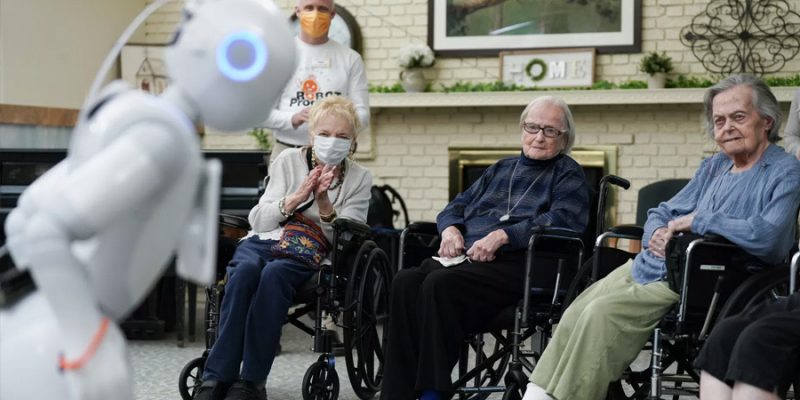
When it comes to helping and elder care, robots in healthcare are proven to be excellent.
One of two robots now employed at a nursing home in Roseville, Minnesota, Pepper, is four feet tall and is pre-programmed with hundreds of jokes. Pepper also assists in keeping track of patients’ health. Household robots are becoming more common and useful, and this most recent use seems to combine two trends that we’ve noticed: the availability of humanoid robots as entertainers and party attendees, as well as their usage as senior companions and health monitors.
The creation of robots and “virtual assisted living” that may aid care for older persons, physically and emotionally, has received increased urgency as a result of the epidemic. Arshia Khan startled herself when she asked a group of senior citizens in Minnesota what they would prefer in a nursing facility. They desired stand-up humor, but not just any humor; they desired crude jokes.
Robots for nursing homes are programmed by Dr. Khan, a professor of computer science at the University of Minnesota Duluth. Dr. Khan requested one of the dozen robots in her lab that day in March, all of varying sizes and designs, to demonstrate its capabilities. The robot, called Pepper and standing four feet tall with a tablet screen in its breast, blinks.
16 of Dr. Khan’s robots will visit eight nursing homes throughout the state later this year, pending permission from the university’s institutional review board, but without the crude jokes. The Duluth robot program is just one of many recently revitalized initiatives to utilize robots and other technology to address some issues in nursing homes and assisted living facilities—or to aid individuals in avoiding them. The pandemic didn’t start the trend, but Covid-19 gave it a new sense of urgency.
More than 200,000 long-term care facility residents or employees have perished from the coronavirus since the epidemic began, and those who survived had to deal with prolonged isolation from their families. Facilities for older persons now face an existential challenge because no one wants to live there, no one wants to work there, and no one wants to send their parents there. According to Mark Parkinson, president of the American Health Care Association, a trade association that represents 14,000 nursing homes and assisted living institutions, more than 300 nursing homes have closed since 2020. According to the U.S. Bureau of Labor Statistics, more than 400,000 employees in long-term care facilities have quit their jobs.
Extra financing for nursing homes is being requested from the federal and state governments. But in the meanwhile, some operators are turning to robots to fill a critical gap. Due to a pandemic that inhibits potentially lethal human connection, homeowners are already embracing new generations of technology and services. Today, it is feasible to have touchless food and grocery delivery, virtual doctor visits, smart speakers, home security systems, and even smart toilets.
All about Stevie
The Trinity College Dublin robot Stevie, which started a two-year experiment in 2018 at Knollwood Life Plan Community in Washington, D.C., was an early arrival. Stevie employed humor, games like bingo and karaoke, as well as songs and stories, to help people remember their past. It could enter rooms with UV rays that destroyed germs on surfaces to aid in infection management. According to James Michels, vice president of development at Knollwood, the residents adored it. Some employees believed they were going to be replaced.
According to Mr. Michels, “residents felt they were a part of something new.” “Caregivers needed to be aware that it was intended to supplement their research, not replace it. Although Stevie appeared on the Time magazine cover, the facility’s grant expired right before the epidemic, and the robot hasn’t been seen since. The promises and current reality of robot care are as follows. Dr. Khan hopes to continue where Stevie left off with the help of her team in Duluth, which also includes ethicists, cardiologists, urologists, psychologists, philosophers, nurses, and graduate students.



















